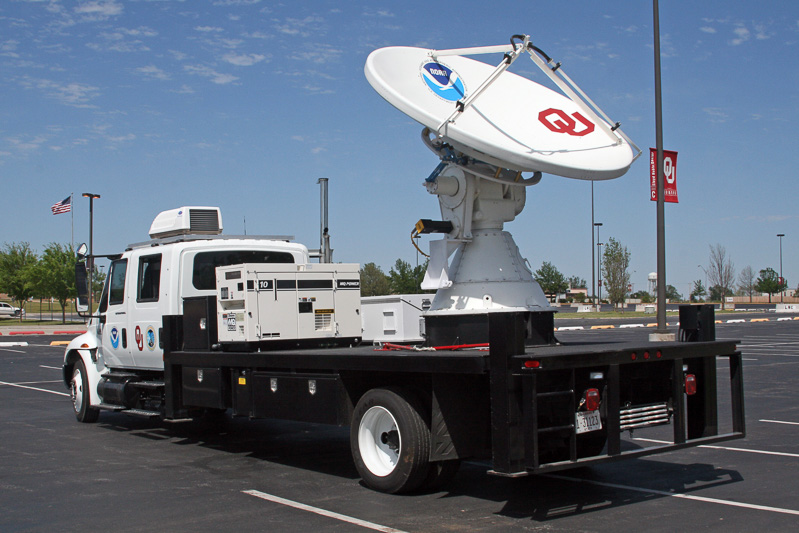

Mobile radars can be driven into position as a storm is developing to rapidly scan the atmosphere at low levels, below the beam of WSR-88D radars. NSSL has used mobile radars to study tornadoes, hurricanes, dust storms, winter storms, mountain rainfall, and even swarms of bats. NSSL's current mobile radar is a dual-polarized X-Band mobile radar known as NOAA X-POL (NOXP).
NOXP is a mobile Doppler radar that operates on a 3cm wavelength (X-Band). This wavelength is more sensitive to smaller particles than the longer wavelengths used by NOAA NWS radars, and is capable of detecting tiny water droplets or snowflakes.
NOXP also has dual-polarization capabilities. This means it can transmit energy pulses with both horizontal and vertical orientations, providing additional details on cloud particle shapes and precipitation size and density. This information helps enhance forecasts of precipitation amounts and can be used to improve computer predictions of thunderstorms.